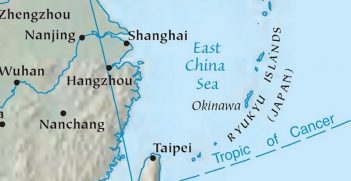Water Governance in the Mekong

The Mekong River is subject to conflict over finite resources. Will new measures by the Mekong River Commission help its problems?
Recently, the Mekong region has been facing increasing challenges, including an escalation in hydropower projects as a result of rapid economic development. The need for cheap and renewable energy is rising, fostering an increase in hydropower development where logistically possible.
Background
While fresh water resources are in theory renewable, the reality is that they are finite, poorly distributed and often controlled by one state or group. Fresh water is fundamental to all ecological and societal activities, such as energy and food production, industrial development, transport, health and employment.
The Mekong River is the largest river in Southeast Asia, hosting a unique ecological system. It has some of the world’s highest diversity of fish and snails, which includes the endangered Irrawaddy dolphin and the giant Mekong catfish. Interconnected through the six riparian countries – Cambodia, China, Laos, Myanmar, Thailand and Vietnam – the Mekong region is one of the most important in the Asia–Pacific. More than 70 million people live directly on its riverbanks and rely on it for food, accommodation and employment.
Future development of the region and its individual countries depends on the successful management and allocation of its water resources, as such it is important that challenges are tackled successfully. The recent restructuring and decentralisation of the Mekong River Commission (MRC) and efforts to ensure the sustainability and efficiency of large projects are aimed at meeting these challenges.
Mekong River Council Reforms
For more than 20 years, the management of the Mekong River system has been in the hands of the Mekong River Commission (MRC). The MRC covers the four lower Mekong countries – Laos, Thailand, Cambodia and Vietnam – however its limited mandate means that the two upstream countries – Myanmar and China – are not included.
Because of its long and tumultuous history, the MRC has undergone some significant structural changes of late. As such, the MRC Secretariat has developed a new strategic direction with the functions and tasks of the MRC being decentralised. It is questionable whether such reforms will prove effective or not.
At its 13 January meeting in Phnom Penh, the MRC endorsed a new organisational structure and cost-sharing arrangement between member countries as part of its four year plan. During this annual gathering, the Council approved the next five-year Basin Development Strategy and Strategic Plan. This encompasses the Annual Work Plan for 2016, allowing the organisation to focus on the core river basin management functions. These include fostering national plans, projects and resources based on basin-wide perspectives, strengthening regional cooperation, improving monitoring and communication of Mekong basin conditions and achieving a leaner river basin organisation.
In terms of budget, there will be an annual 10 percent increase of the financial contributions from the member countries with the aim of achieving self-financing by 2030. Another change is the appointment of Pham Tuan Phan of Vietnam as CEO, the first riparian CEO of the MRC since its foundation. These issues have proved challenging in the past and successful implementation of these changes will be key to the organisation’s development.
Xayabouri case
Besides these organisational and structural challenges, the recent Procedures for Notification, Prior Consultation and Agreement (PNPCA) on the Xayabouri and Don Sahong hydropower dams further challenge the MRC and its goal to optimise the multiple-use and mutual benefits of all riparians. Furthermore, these procedures challenge the goal of minimising the harmful effects that might result from natural occurrences and man-made activities. This is demonstrated in the case of the Xayabouri, which will be the first mainstream dam on the Lower Mekong. This is particularly notable as the PNPCA was used for the first time. Moreover, it shows the problematic nature of large infrastructure developments in the region and their impact on the local population and the uneven distribution of wealth. This is especially true among the poorer rural communities.
As the first mainstream dam on the lower Mekong River, the Xayabouri will set a precedent and herald future mainstream dam projects. If it is allowed to go ahead, it is likely that other dams also will. Such a development seems likely as there are several other proposed mainstream dams along the Mekong. One such proposal is for instance the Don Sahong Dam in southern Laos. The issue with this, however, is that it neglects the problem of cumulative impacts on the river, contributing to transboundary effects downstream.
In addition, the MRC recommended further studies on the impacts of mainstream dams based on the major Strategic Environment Assessment by the MRC in 2010. This states that mainstream dams on the Mekong should be deferred for another 10 years due to possible risks and unknown impacts on the river. Similarly, the downstream countries Cambodia and Vietnam still do not support the project and maintain that the PNPCA process was not finished.
Implications for the future of the Mekong Region
Fresh water is fundamental for all ecological and societal activities including energy and food production, transportation, health and employment. This is particularly true in a region where 70 million depend on the river. As a result, future developments of the region and the individual countries depend on the successful management and allocation of the water resources. To achieve this, it is important that arising challenges are tackled successfully. This includes the restructuring and decentralisation of the MRC as well as the construction of large projects in the most sustainable and efficient way not only focusing on state boundaries but beyond in a regional and transboundary context.
Dr Andrea Haefner is an Adjunct Research Fellow at the Griffith Asia Institute and teaches in the School of Government and International Relations, Griffith University. She is also an Earth System Governance Fellow. An earlier version of this article was published online in the Griffith Asia Insight on 21 January 2016.





